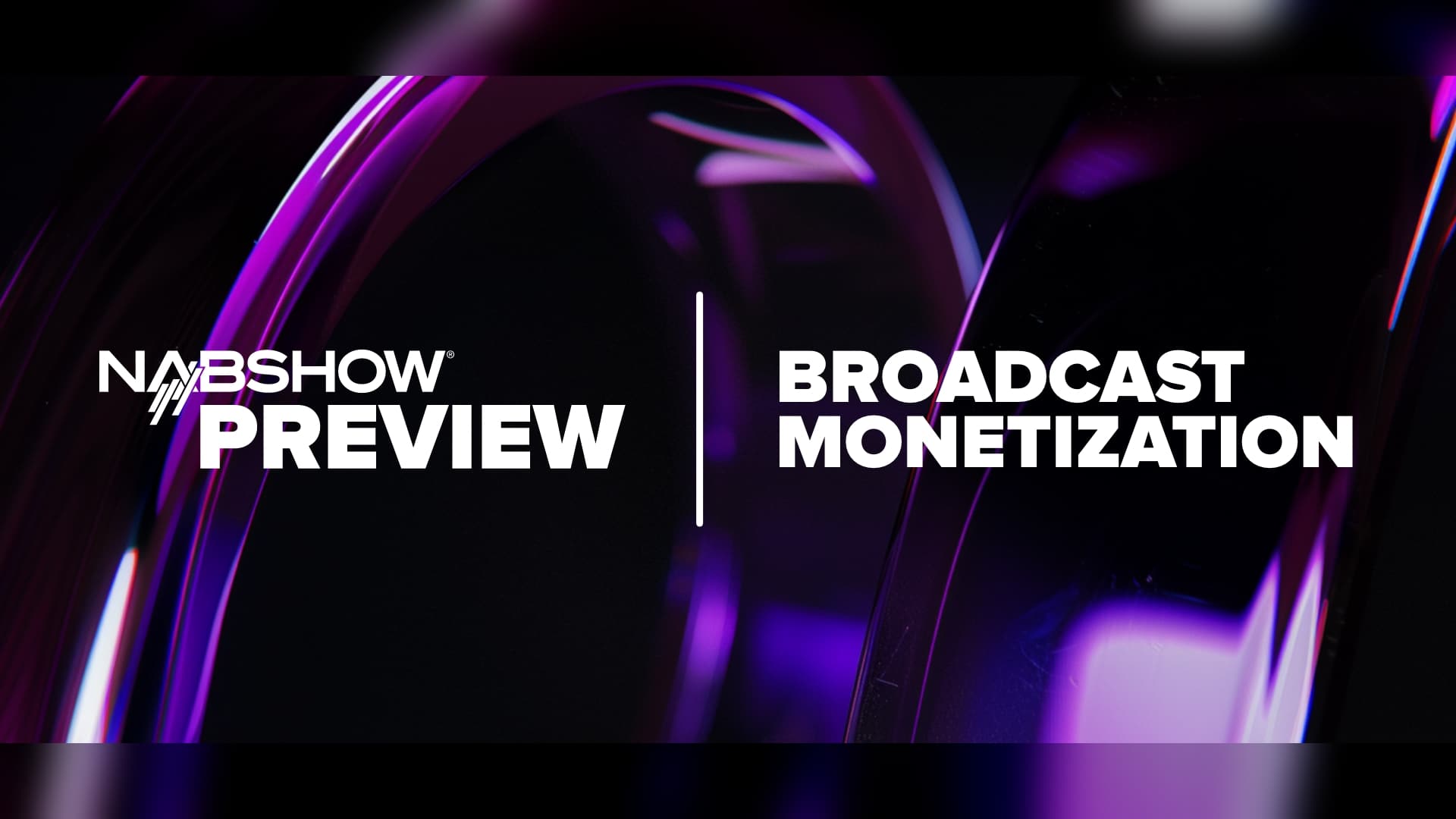NAB Show Preview: Monetization strategies evolve as streaming reshapes broadcasting

Subscribe to NCS for the latest news, project case studies and product announcements in broadcast technology, creative design and engineering delivered to your inbox.
As broadcasters and media companies prepare to gather for the NAB Show in Las Vegas this April, monetization has emerged as a central theme in an industry navigating profound transformation. The annual trade show, scheduled for April 5-9, 2025, will spotlight new revenue generation approaches as viewing habits evolve across platforms.
With traditional broadcast models facing disruption from streaming services and changing consumer preferences, industry leaders are reimagining monetization strategies to maintain profitability while meeting audience expectations.
This year’s NAB Show will explore how companies balance subscription models, advertising opportunities and hybrid approaches across increasingly fragmented distribution channels.
The shifting monetization landscape
The transformation in how audiences consume content has created challenges and opportunities for broadcasters and streaming platforms. This evolution requires completely rethinking how media companies approach their business models.
“A fundamental shift in viewing habits has led to a paradigm change in monetization,” said Steve Reynolds, chief executive officer of Imagine Communications. “While traditional broadcast remains viable, the rise of linear streaming and on-demand platforms has reshaped how audiences consume content. This shift has fragmented the audience, making it increasingly challenging for advertisers to reach consumers effectively.”
The industry is moving from viewing inventory simply as ad slots toward a more sophisticated approach that prioritizes audience engagement across platforms.
“Instead of viewing inventory as a collection of ad slots, broadcasters must adopt a new mindset — one that considers their audience as their inventory,” Reynolds said. “This shift empowers advertisers to execute cross-platform orders effectively, seamlessly blending linear and digital strategies to reach the right viewers.”
Hybrid revenue models gain traction
As traditional linear TV revenue wanes, media companies increasingly embrace multiple revenue streams to maintain growth.
“The conversation around monetization is being driven by the need for broadcasters and content owners to adapt to changing viewer behaviors while maintaining profitability,” said Chris Clarke, chief revenue officer and co-founder of Cerberus Tech. “The shift toward hybrid revenue models — combining subscription, advertising, and pay-per-view — is accelerating, especially as traditional linear TV revenue declines.”
Free ad-supported streaming television (FAST) has been a significant growth area, offering viewers free content in exchange for watching advertisements.
“Monetization will remain central to the NAB conversation, particularly with the accelerated adoption of free ad-supported streaming television,” said Anupama Anantharaman, vice president of product management at Interra Systems. “Broadcasters are prioritizing solutions that balance ad relevance with seamless viewer retention, moving beyond basic insertion tactics to contextual alignment.”
The success of FAST platforms depends heavily on sophisticated advertising technology that maintains the viewing experience.
“Viewers increasingly accept ads as a fair trade-off for free or lower-cost content, with streaming platforms and broadcasters needing to fully explore the optimization of their all-important advertising strategy,” said Jacques Le Mancq, CEO of Broadpeak. “Dynamic ad insertion is the solution, delivering seamless, personalized ads, encouraging viewer engagement and ‘stickiness’.”
Le Mancq emphasized that effective ad insertion requires comprehensive technical solutions: “But to achieve maximum fill rates and drive monetization, DAI tech has to reach far beyond simple insertion. There’s meticulous content preparation required; truly dynamic adaptation to each viewer or device; tight integration across ad tech workflows; and ensuring ad breaks are delivered fluidly via perfect stream stitching.”
As subscription models mature, however, companies must reduce churn and maintain customer relationships.
“Churners will keep on churnin’! That is, if broadcasters don’t get ahead of it,” said Gilles Domartini, founder and CEO of Cleeng. “No business in any industry is immune to churn. Those who embrace advanced technologies like AI-powered analytics and data insight tools to inform retention strategies will be more successful at achieving revenues and loyalty from subscribers on an ongoing basis.”
Short-form content and new engagement strategies
Platforms are increasingly leveraging short-form video content to boost engagement and create new monetization opportunities.
“As streamers look to accelerate their short-form content production to offer more compelling and refreshed content offerings, it is important to couple it with a proper short-form windowing strategy, as a first step,” said Paul Pastor, co-founder and chief business officer of Quickplay.
Artificial intelligence is playing a crucial role in this transformation, enabling the efficient creation of short-form content from existing assets.
“Leveraging AI tools, trained on various use cases like sports and video on-demand content, accelerates time-to-market and increases the velocity of publishing through features that identify key moments, cut, verticalize and publish short form content derived from live, freshly premiering, and archival content,” Pastor said.
The strategic implementation of short-form content can significantly impact audience retention and create additional revenue streams.
“Short form video offers more monetization opportunities with ad inventory and shoppable experiences, and represents a massive opportunity to maximize subscriber loyalty, reduce churn, and own the complete consumer story,” Pastor added.
Sports streaming monetization
The high cost of sports rights acquisitions is driving innovation in how live sports content is monetized.
“An important trend is the evolution of monetization for live sports streaming,” said Eric Gallier, vice president of video solutions at Harmonic. “The rising costs of sports rights acquisition have intensified the need for innovative monetization strategies in live sports streaming — ensuring revenue growth without compromising fan engagement.”
Technological advances are creating new opportunities for targeted advertising during sports broadcasts.
“We’re seeing advancements in automated in-stream advertising and the automatic insertion of SCTE-35 markers in live content, including sports,” Gallier added. “These technologies are empowering service providers to better monetize high- and low-action moments.”
The re-emergence of context in advertising
After a period where impression-based advertising dominated the conversation, the industry is rediscovering the importance of context in advertising effectiveness.
“We’ve seen the pendulum swing toward an impression-based model, where every ad placement was treated as interchangeable, leading to a race to the lowest price,” said Reynolds. “But now, the industry is shifting back, recognizing the importance of advertising in context and the value of premium programming. Advertisers and content owners are rediscovering that where an ad appears matters — not just who sees it.”
This shift reflects a growing understanding that not all impressions deliver equal value.
“One key trend is the merging of linear and digital strengths — what we at Imagine Communications call ‘re-linearization,'” Reynolds added. “Digital platforms are now enabling mass audience reach while offering data-driven insights and attribution, creating a hybrid approach that blends the best of both worlds.”
Infrastructure evolution enables new business models
The transition to IP-based and cloud infrastructure creates opportunities for more flexible business models.
“At this year’s NAB Show, we’re excited to see how IP-based distribution is opening up new monetization opportunities and enabling more flexible business models without the high costs associated with legacy infrastructure,” said Clarke. “We’re particularly watching how cloud-native workflows, such as those enabled by our Livelink IP video delivery platform, are helping content owners rapidly deploy, scale, and monetize live feeds across multiple platforms.”
As the NAB Show approaches, the industry’s focus on monetization reflects the fundamental challenges and opportunities facing broadcasters and media companies today.
The conversations in Las Vegas will likely center on finding the right balance of revenue streams, leveraging technology to enhance advertising effectiveness, and creating sustainable business models that meet the needs of both audiences and advertisers in an increasingly complex media landscape.
Subscribe to NCS for the latest news, project case studies and product announcements in broadcast technology, creative design and engineering delivered to your inbox.






tags
Anupama Anantharaman, Broadcast Monetization, Broadpeak, Cerberus Tech, Chris Clarke, Eric Gallier, Free Ad-Supported Streaming Television (FAST), Harmonic, Imagine Communications, Interra Systems, Jacques Le Mancq, NAB Show 2025, NAB Show News, Paul Pastor, Quickplay, Steve Reynolds
categories
Featured, NAB Show, Streaming